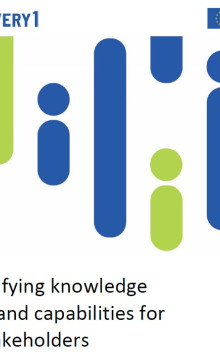
Identifying knowledge gaps and capabilities for all stakeholders
Abstract
The transition to clean energy in the European Union is increasingly critical, with digitalisation playing a central role in enhancing the connectivity, efficiency, reliability, and sustainability of energy systems. Deliverable 3.1 of the Every1 project “Identifying knowledge gaps and capabilities for all stakeholders” investigated the knowledge levels, interests, and gaps of various energy stakeholders— beneficiaries (citizens and energy communities), policy-makers, communicators (cluster organisations), and energy providers (Distribution System Operators, DSOs, and Transmission System Operators, TSOs)—regarding digital and sustainable energy practices. One of the aims of this work was to inform materials production (WP4) and learning pathways (T3.3 and T3.4 in WP3) developed in the Every1 project. Using a mixed-methods approach, including surveys, focus groups, and interviews, we identified diverse needs across these groups. Citizens show moderate interest in energy topics, influenced by demographic factors. Among those citizens who are interested in learning about energy there is a strong demand for more knowledge on energy efficiency, self-sufficiency, and community collaboration.
Introduction
The need for a clean energy transition in the EU has never been more evident than it is today. The ongoing conflict in Ukraine and the energy crisis have starkly highlighted that over-dependence on fossil fuels not only contributes significantly to the EU’s greenhouse gas emissions but also poses a serious threat to European security, prosperity, and economic competitiveness (Dekeyrel & Fessler, 2023).
The clean energy transition is increasingly focused on digitalisation. Digitalising energy systems enhances their connectivity, efficiency, reliability, and sustainability (International Energy Agency, 2017). The European Commission has emphasized this with the adoption of the “Digitalising the Energy System - EU Action Plan” in October 2022, which aims to accelerate digitalisation in the energy sector.

Digitalisation goes hand in hand with other trends in energy transition (Judson et al., 2020). The first such trend is decarbonisation or lowering the amount of greenhouse gas emissions produced by the burning of fossil fuels. Both ‘smart’ measures, such as system optimisation, and ‘non-smart’ approaches, like building retrofits, play a crucial role in cutting overall energy demand. These efforts also facilitate the integration of renewable energy sources, further decreasing reliance on fossil fuels.